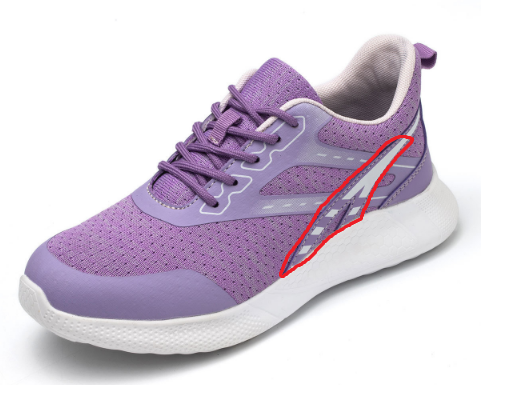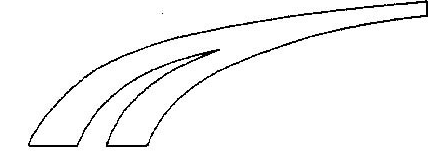EU and UK design registrations: take caution in showing earlier trade marks as part of the protection!
One of the most common mechanisms for proceeding with invalidating an EU (or UK) design registration is to assert that the registration lacks novelty or individual character over an earlier public disclosure which predates it. This is using Article 25(1)(b) CDR in the context of EU design registrations, or s11ZA(1) RDA 1949 in the context of UK design registrations.
There are instances, however, where a given EU/UK design registration conflicts with an earlier dated distinctive sign, such as a trade mark, which covers that territory. In these instances, the owner of the earlier distinctive sign is able to rely on a further, potentially more potent, ground for invalidating the EU/UK design registration. This is using Article 25(1)(e) CDR in the context of EU design registrations, or s11ZA(3) RDA 1949 in the context of UK design registrations. Where this invalidation ground is relied on, the invalidation action will succeed where it can be shown that the usage of the earlier distinctive sign/trade mark in the design registration constitutes an infringing use of the earlier distinctive sign or trade mark.
An example of this latter invalidity ground being successfully employed is in the case of EU design registration 008924948-0013, which relates to a shoe (shown below). . Importantly, the EU design registration contained a striped portion (highlighted below in red) which formed an element of the surface decoration (and thus the claimed protection) of the shoe.

In this instance, Puma SE applied to invalidate this EU design registration, not because it lacked novelty or individual character, but because the EU design registration related to an infringing use of one of Puma SE’s earlier protected figurative EU trade marks – namely EUTM No 18 200 424 (shown below) which is registered, amongst other goods, in respect of “footwear” in Nice Classification 25:

The EUIPO agreed with PUMA SE, and held that the presence of the striped portion in the EU design registration did constitute an infringing use of the earlier EU trade mark. As a result, the entire EU design registration was invalidated.
It can be seen therefore that an invalidity action sought under Article 25(1)(e) CDR, in the context of an EU design registration, or s11ZA(3) RDA 1949 in the context of a UK design registration, can be an extremely potent tool for invalidating the design registration. This is so, particularly in cases where the design registration is otherwise novel and has individual character, making an invalidation action under Article 25(1)(b) CDR (or s11ZA(1) RDA 1949 in the case of the UK) not possible. Though purely for completeness, it is to be noted that an invalidity action sought under Article 25(1)(e) CDR (or s11ZA(3) RDA 1949 in the case of the UK) is invariably only pursuable by the owner of the distinctive sign which is being relied upon.
This raises two take-home points.
First, for those keen to preserve protection for particularly distinctive visual features of their product lines, it is worth considering whether trade mark protection for these distinctive features might be possible, such as via one or more figurative; shape; or potentially even colour; trade marks. To the extent that such trade marks can be obtained, as well as then being a very effective tool for dealing with competitors otherwise seeking to emulate these distinctive features, such trade marks can also then be a very potent tool for invalidating any subsequent EU/UK design registrations otherwise incorporating features which may have a similar or identical appearance. Indeed, and with reference back to PUMA SE, note that they have recently sought protection for a number of other figurative EU trade marks relating to their brand/stripe patterns in Nice Classification 25 in the context of “footwear”. Perhaps motivated by the success of the above invalidation action.
The second take-home point, for those thinking about pursuing EU/UK design registration protection more generally, is that care should be taken when the drawings from any potential new EU/UK design registration might otherwise show design features that might be construed as being visually similar to an earlier distinctive sign/trade mark covering the relevant territory. If such design features are present, and are of commercial interest, it may be worth considering pursuing two variants of the design in the initial EU/UK design registration application. The first variant could then show the pertinent design features, which may then provide a first EU/UK design registration which is of greater commercial interest, but which is potentially more vulnerable to invalidation later on due to it conflicting with the earlier distinctive sign/trade mark. To mitigate against this, a second design variant might be additionally pursued, which does not show the potentially contentious design features relating to the earlier distinctive sign/trade mark at all. This latter EU/UK design registration would then appreciably be of lower commercial importance than the first EU/UK design registration, but would be less vulnerable to invalidation later on, and might in any case provide broader protection that the first EU/UK design registration. So in the above shoe example therefore, such a second EU/UK design registration might have taken a form whereby the entire rear portion of the shoe, which included the notionally contentious striped portion, was disclaimed from the scope of protection:

Useful links
- Article 25(1)(b) CDR: https://dycip.com/article251bcdr
- s11ZA(1) RDA 1949: https://dycip.com/s11ZA1rda1949
- Article 25(1)(e) CDR: https://dycip.com/article251bcdr
- s11ZA(3) RDA 1949: https://dycip.com/s11ZA1rda1949

